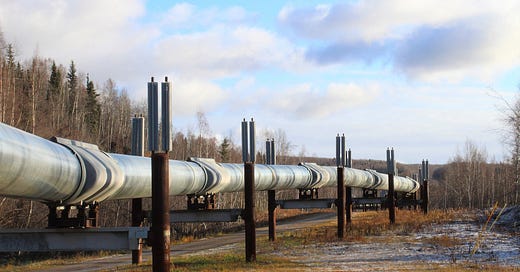I don’t know how anyone could’ve adequately followed all the energy and environmental news that happened this year without spending 40 hours a week on the subject (and even that didn’t feel like enough).
Here’s my short list.
The Good
Nuclear Energy II: Electric(ity) Boogaloo: Plant Vogtle, the U.S.’ largest nuclear power plant, came online this year. Tech giants are restarting shuttered nuclear reactors at Three Mile Island, Palisades, and elsewhere to meet growing electricity demand driven by artificial intelligence data centers. Procuring reliable, 24/7 energy for data centers is a win (even if it is only possible with Inflation Reduction Act subsidies that ought to be eliminated across the board). Nuclear’s public image is improving, too: a majority of Americans are supportive of more nuclear power plants.
People are waking up to grid reliability concerns: In the same headlines as AI and data centers came worries about grid reliability. MISO, PJM, SPP, and ERCOT urged the Supreme Court to toss EPA’s new rules regulating CO2 emissions from existing coal and natural gas power plants. It was an “unprecedented” move “highlighting how worried the grid operators are about what they consider to be overly vague and unworkable rules,” according to
Isaac Orr and Mitch Rolling, formerly of American Experiment.Corporations backpedaled on ESG, emissions targets: 2024 was a year marked by quiet backpedaling of corporate environmental, social, and governance (ESG) standards and emissions targets. Air New Zealand ditched its goal to reduce emissions 29 percent by 2030, citing “aircraft limitations, lack of available alternative jet fuels, and insufficient policy support.” Google no longer buys carbon credits and can no longer claim to be carbon-neutral. Blackrock, Unilever, JP Morgan & Chase, Tractor Supply Co., and more began realistically assess the costs and benefits of net-zero.
The Bad
EPA’s assault against coal plants is in full effect: Coal plants that expect to operate past 2039 must capture 90 percent of their CO2 emissions by 2032 or shut down. The incoming administration may have opportunities to issue new rules, but that takes time, and grid operators and utilities must start planning capacity and retirements now, not in five years. The Supreme Court swung and missed when it declined to intervene, stating that challengers of the rule are likely to succeed on the merits but “they are unlikely to suffer irreparable harm” while the D.C. Circuit Court works things out.
MISO, and only MISO, will have high blackout risk in 2025 under normal peak conditions: The latest reliability assessment from NERC forecasts that the Midcontinent Independent Systems Operator (MISO), of which Minnesota is a part, will be “high risk,” in 2025 indicating likelihood of blackout under normal peak conditions. The culprit? Retiring reliable, 24/7 generators prematurely and failing to make up for the difference with intermittent wind and solar buildout. As American Experiment policy fellow Bill Glahn says: Buy a generator, folks.
Billions of tax dollars doled out in wind, solar, and EV subsidies: The closeout of the Biden administration has been a scramble to secure loans and grants under the Inflation Reduction Act. One example: EV car maker Rivian received $6.6 billion for a new factory on the condition that the company “not actively” oppose “union organizing efforts” at the plant. If it ever is built, it’ll be 2028 — long after the Biden administration could be held accountable for the flagrant misuse of taxpayer dollars.
Even more federal lands locked up to natural resource exploration and development in 2024: Some rules I followed include the Western Solar Plan, which deprioritizes anything but solar on 31 million acres in 10 states and the Greater Sage-grouse Land Use Plan amendments, which restricts 35 million acres for sage grouse habitat preservation. Other rules steepened regulatory wind-and-solar favoritism; in 2024, the Interior Department finalized a rule giving steep discounts on federal land leases to wind and solar developers.
The Complicated
Fixing permitting? Not this year: Streamlining the lengthy and litigious permitting process is a worthy goal and would help the U.S. build new mines, oil and gas, wind and solar, transmission lines, and infrastructure projects more quickly. However, it takes time to get right, and Congress failed to reach an agreement this year. That means Congress will have another bite at the apple in 2025.
Domestic mines rejected, but renewed attention on critical minerals: The Biden administration thwarted the Biden administration’s critical minerals goals by denying the Ambler Road in Alaska. Minnesota needlessly delayed environmental review on the NewRange project until late 2025. However, growing attention to critical minerals and China’s recent export bans have led to bills introduced in Congress to help secure supply chains. There’s a long way to go, but 2025 promises more emphasis on cultivating domestic supplies.
And on that note, 2024 marked the publication of my first report with American Experiment, “Mission Impossible: Mineral Shortages and the Broken Permitting Process Put Net Zero Goals Out of Reach,” which I coauthored with Debra Struhsacker, a hardrock mining policy expert.
If I could have one thing in 2025, it’s this: a full repeal of Minnesota’s archaic 1994 moratorium on new nuclear construction. That would go a long way to providing Minnesotans with affordable, reliable electricity that also happens to be carbon-free.
What have I missed? What do you hope to see in 2025 (either in energy policy, or from me?) Thank you for following my energy coverage this year. Happy New Year!




Sarah, Reliable generation (Fossil & Nuclear) cannot be replaced by solar and wind, and might not be replaceable with solar, wind and batteries or other storage. There is growing awareness of the necessity of storage and of the magnitude of the storage requirement. Of course, there might be Dispatchable Emission-Free Resources (DEFRs) at some time in the future, but then we wouldn't need wind and solar. ;-)
sparky billboards & whirlygigs = waste of $$$$$$.
CO2 is plantfood.